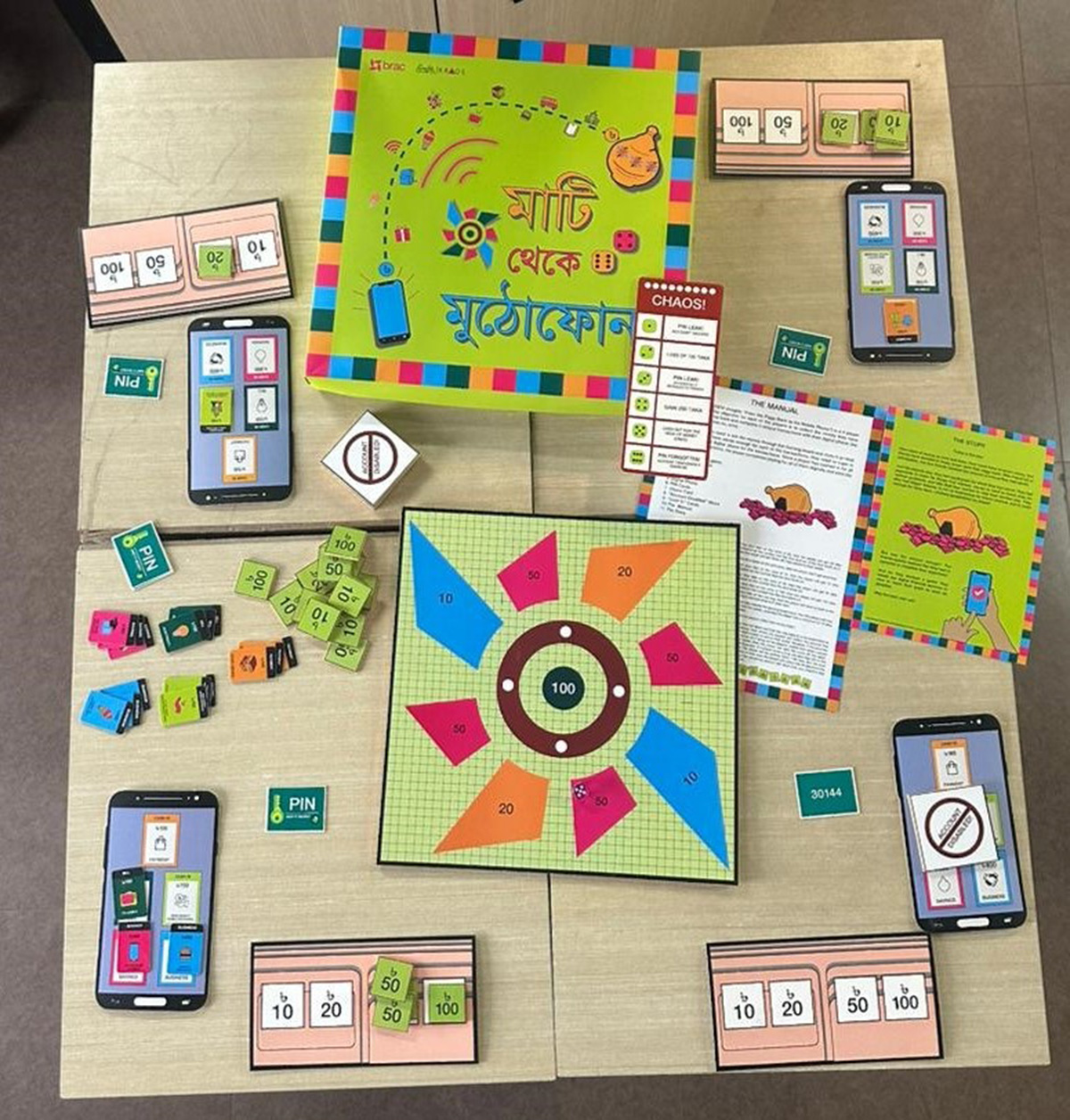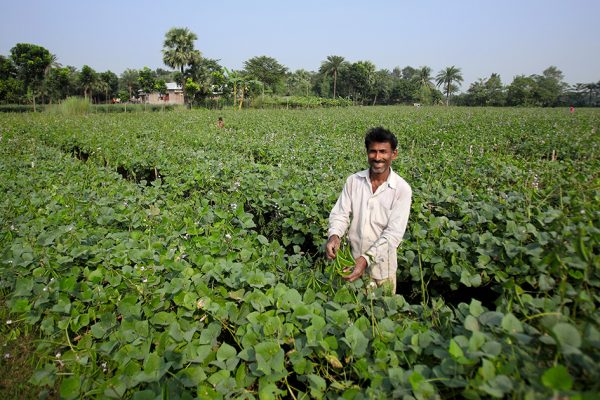5 tips for developing your very own behavioural board game
Reading Time: 4 minutes
How can we expand our tools for facilitating impact beyond traditional programming? BRAC’s Social Innovation Lab has been experimenting with games for behavioural change programming for quite a while now and based on this wealth of experience, here we have curated 5 pointers for people looking to create their very own behavioural change board game.
So you want to gamify your interventions? Maybe, you think the people you are working with will respond better to games than traditional approaches. Or, maybe you just want your work to have a sustainable impact.
No matter the reason, we have got you covered.
BRAC’s Social Innovation Lab has long been experimenting with gamification as a crucial element of behaviour change communication. In 2020, as a part of our work in the Hygiene and Behaviour Change Coalition, we developed renditions of snakes-and-ladders and pac-man with COVID-19 hygiene messaging.
Last year, we partnered with professional board game designers Kraftz, to co-create a four player board game called Maati Theke Muthophone (also known as Clay2Cell) which aims to work with women and adolescents living in hard-to-reach areas in Bangladesh in building knowledge and habits about using digital financial services.
Now, with the same partners, we are designing and testing a board game to enhance the social and emotional wellbeing of young school-going students.
Coming from these experiences, what are our biggest takeaways? Here are five quick tips:
First, ask yourself, “Why do you want to gamify your approach?”
Everyone wants to gamify their programming, or fund gamification. Why then, do we see so few cases – if any – of learning-based games scaled up?
Often, we rush into gamification without much thought of why it’s necessary. The result is poorly designed games that fade into obscurity because they fail to address the root problem that needs solving.
When conceptualising Clay2Cell, we saw that women in hard-to-reach areas were often resistant to using digital financial services, thinking it to be the domain of their husbands or children. That’s why we targeted their adolescent children with a board game resembling ludo- something they already play with parents. We saw gamification as an opportunity to equip these would-be users with knowledge and habits, who could then transfer the knowledge to their mothers as ambassadors.

The behavioural board game Clay2Cell works to develop skills necessary to use mobile financial services for women living in hard-to-reach areas in Bangladesh. © BRAC 2023
Find the right competencies in your team
A successful board game needs designers who are equipped with the principles of game design. It needs subject matter experts. It needs behavioural researchers who can extract and analyse the audience’s habits and aspirations. Finally, it needs communication experts to package it. If you have these competencies in your team- then congratulations to you. But if you don’t, invest in capacity building or consider bringing in or borrowing resources from outside.
Build a fun game first, then iterate the content
One of the biggest reasons educational game design fails is the singularity of focus on ‘educating’. Most games we have grown up with have something in common: they were fun, short and repeatable, with competitive as well as collaborative elements. These games give off a feeling of ‘want to do’ as opposed to ‘need to do’. Education can often feel like the latter.
Adapting a tried and tested existing game, like the HBCC games mentioned above is one quick fix. Here, designers must ensure that the messaging incorporated doesn’t ruin the fun.
When working with a new concept, however, it’s worth prioritising game mechanics over content. This doesn’t mean one has to be done at the expense of the other- in Clay2Cell, we were building game mechanics along with content. But the focus was on the game and a majority of the messaging was carefully added later.
Prototype, test, iterate and evaluate with your audience
Testing a prototype behavioural game may lead to minor tweaks – like changing the examples and iconography to something more recognisable for the people you are working with as in Clay2Cell. It can also reveal the necessity of a complete overhaul, like in the case of our game to enhance the social and emotional wellbeing of children.
When we first ideated a board game about wellbeing, we built a prototype where four players would answer questions regarding four aspects of wellbeing to progress to the next stage. But as soon as we tested it with our audience, we found the questions were too academic and the game was not as interactive as we had hoped. Worse still, we realised it wasn’t going to be repeatable in our absence.
So we went back to the drawing board. We asked ourselves- if these children do not find this fun, what do they find fun? We remembered the playground games they invited us to play with them. We realised that these games should be the basis of what we design. This was just the first of our iterations, all of which we were scoring on pre-set metrics.
Then, we progress to evaluation. Rigorous evaluation is mandatory but it is also very expensive. Don’t have deep pockets? You can always bring out frontline pragmatism and find a system that works for everyone. For Clay2Cell, we conducted a rapid-evaluation by running tournaments. This allowed us to get a set of players who have played the game different numbers of times and allowed us to test impact against number of playthroughs.
Find any and all synergies possible to multiply impact
So, you have developed a game that serves its purpose effectively, can we now consider the job done?
We don’t think so. Ask yourself- what needs to happen to make the most, to serve the most number of people to the highest quality possible, and who can collaborate to make that possible. There are so many brilliant ways to carry your work forward and find synergies within and out of your support networks. For Clay2Cell, we are distributing the game to secondary schools with the help of the BRAC Education programme. But depending on your objective, your distribution strategy may be very different. Consider multiplying your impact by collaborating with potential partners.
These are some of our learnings. Do you have some of your own? Share your ideas and experiences with us down in the comment section.
BRAC Social Innovation Lab tests, prototypes, adapts and collaborates with BRAC’s programmes to achieve large-scale, positive changes in the communities that they work in. In line with BRAC’s economic and social programmes that work to create opportunities for everyone to realise their potential, we incubate, adapt and mainstream innovation within and outside BRAC by generating quick insights and redesigning service delivery models.
Kazi Ashfaqul Huq is the Interaction Designer at BRAC Social Innovation Lab





